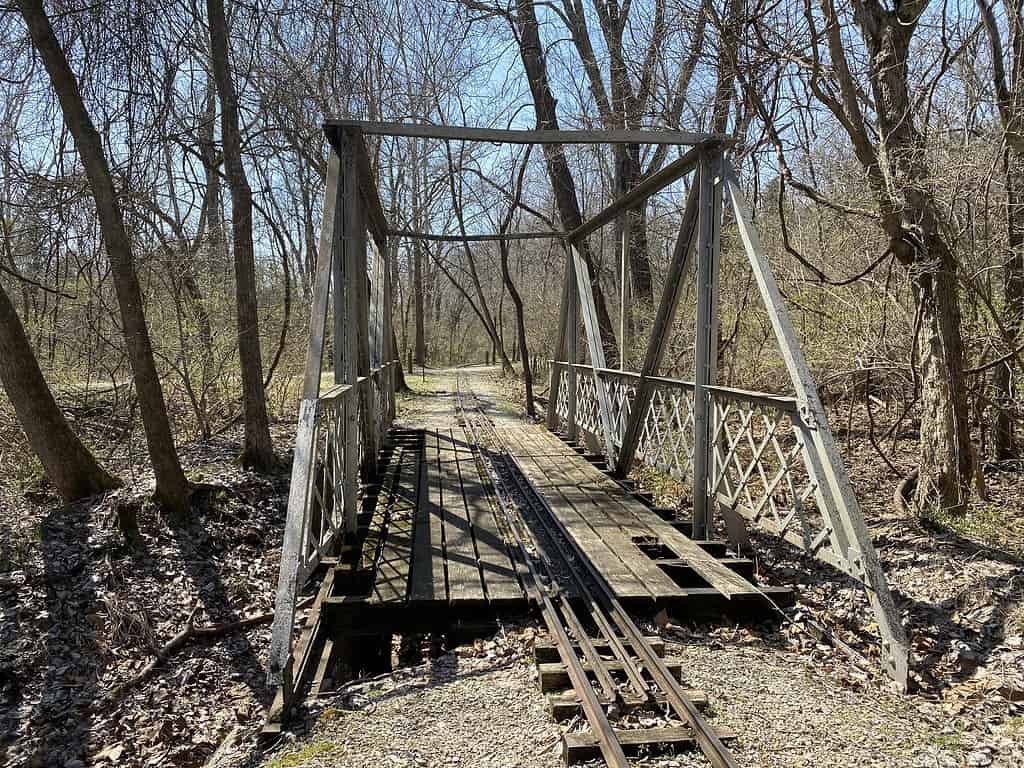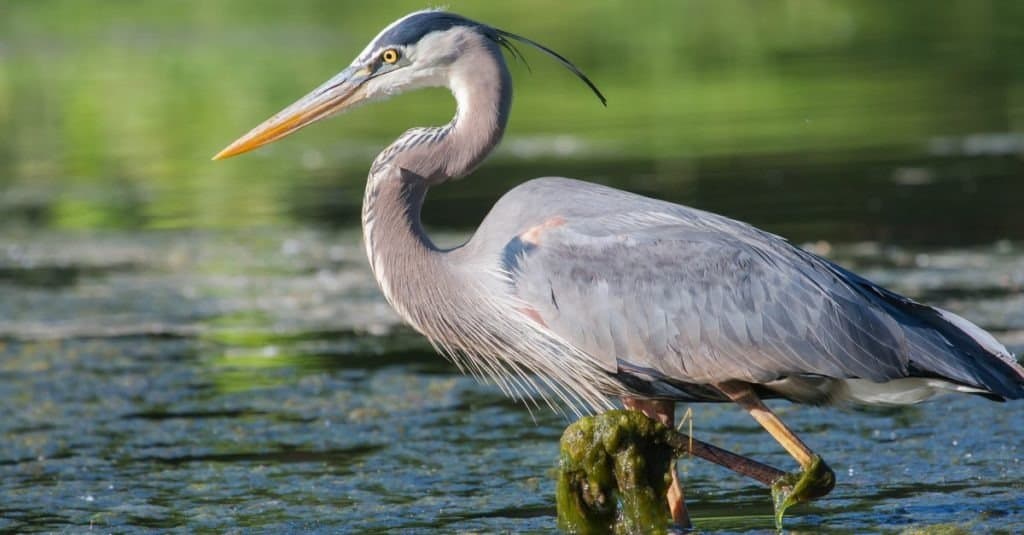Tucked in the woods in Wildwood, MO, just outside St. Louis, is a two-mile stretch of an abandoned road. Located at the intersection of Highway 109 and Old State Road, it was once bustling with the activity of trucks hauling gravel from the Meramec River to the nearby railroad. However, in the 1970s, the quarry closed, and the road was no longer needed. Today, it’s impassable to cars, but it has been converted into a popular hiking and bike trail.
Nothing sounds sinister about this story until you hear the eerie tales as to how this stretch of abandoned road became known as Zombie Road.
The History of Zombie Road

Zombie Road in Missouri is one of the most haunted roads in the United States.
©EagleScout2017, CC BY-SA 4.0, via Wikimedia Commons – License
Today, many consider “Zombie Road” to be one of the 20 most haunted roads on Earth, but this wasn’t always the case. Originally Lawler Ford Road, it was merely a utility road that trucks used to haul gravel. Constructed as a dirt path in the early 1860s to connect the river to the railroad, it was later converted into a gravel road in the 20th century.
Once it fell out of use in the 1970s, the city of Wildwood paved the two-mile stretch in 2010 and turned it into a pedestrian and cycling trail through the forest.
What’s the Urban Legend Behind the Spooky Stories?
How did a trail through the forest get its creepy reputation? Despite its beautiful woodland location, visitors to the area have reported feeling spooky vibes and a sinister atmosphere. Since the 1950s, Zombie Road has been at the center of numerous ghost stories and legends. Some of the most popular legends are stories of supernatural sightings of ghosts, zombies, and other unexplained phenomena.
The area happens to be the location of one of the largest Native American burial mounds in the country. Stories abound of shadowy figures, ghostly Native Americans, industrial workers, confederate soldiers, and a pack of child ghosts.
A Great Place for a Hike

A close-up of a bridge on Rock Hollow Trail, or Zombie Road, in Wildwood, MO, outside of St. Louis.
©EagleScout2017, CC BY-SA 4.0, via Wikimedia Commons – License
Today, Lawler Ford Road is Rock Hollow Trail. It’s a ten-foot wide, paved path, 2.3 miles long. It is inaccessible to cars, but it’s available to pedestrian traffic and cycling. If you need a rest along the way, or if you’d like to sit and watch the wildlife go by, you can take a stop along one of the 13 wooden bridges lining the path. If you’re lucky enough to be there in the spring, you may be able to spot the Bluebell wildflowers blooming.
Hiking and Safety in the Area
If you’re planning to hunt for spectral figures at night along Zombie Road, chances are you are much more likely to run into police writing tickets for trespassing. The trail is closed at night. It’s open one-half hour before sunrise and closes one-half hour after sunset.
It’s recommended to stay on the trail and be sure not to disturb the wildlife. Black bears have been making a comeback in Missouri, and sightings have occurred around the Wildwood area. The Missouri Department of Conservation advises outdoor enthusiasts to Be Bear Aware.
Wildlife Around Zombie Road

Much wildlife lives on and around Zombie Road, including great blue herons.
©Joseph Scott Photography/Shutterstock.com
The trail connects the Hamilton Carr Trail and the Al Foster Memorial Trail. It’s part of the Great Rivers Greenway network. Wildlife to watch out for include white-tailed deer, great blue herons, and wild turkeys. Trees along the trail include towering oak trees such as the white oak and northern red oak.
The Meramec River has one of the most diverse mussel fauna in North America. It is a great source of freshwater mussel diversity. Some of the species include the three-ridge and pink heel-splitter.
The photo featured at the top of this post is © EagleScout2017, CC BY-SA 4.0, via Wikimedia Commons – License / Original
Thank you for reading! Have some feedback for us? Contact the AZ Animals editorial team.






